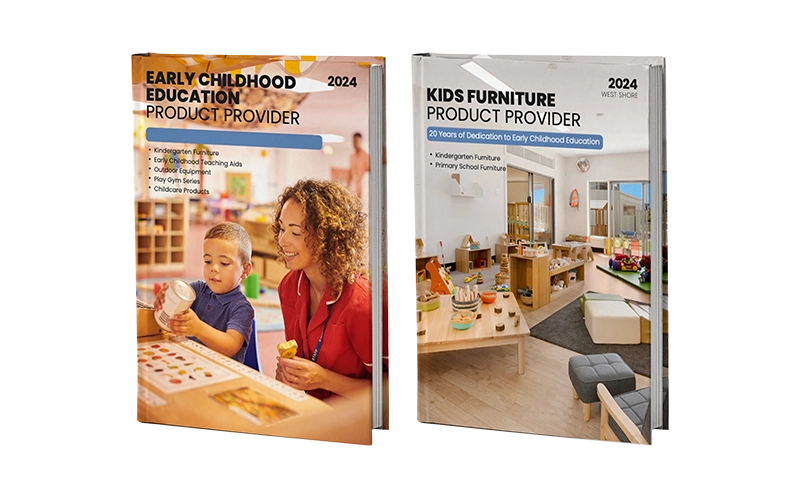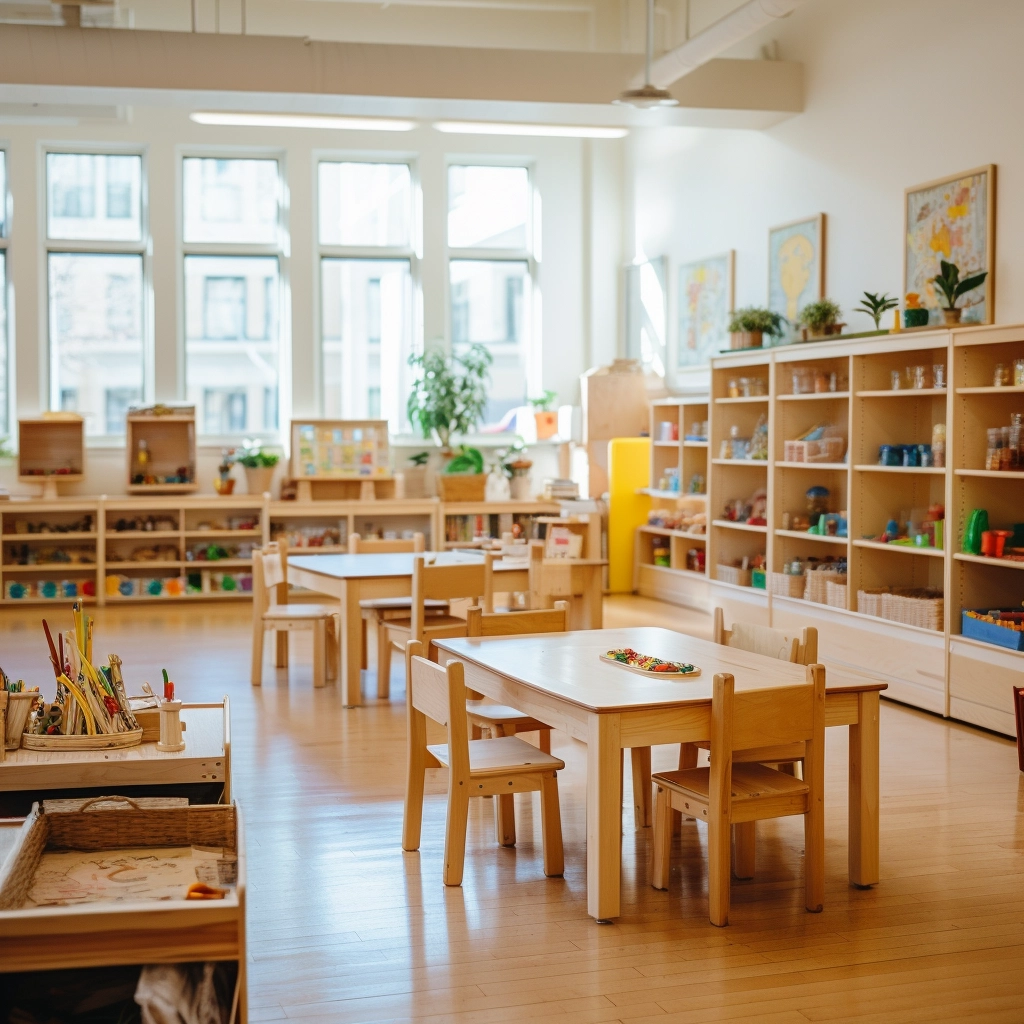What makes a preschool classroom design truly supportive of young children’s growth? Is it the cheerful colors, the child-friendly furniture layout, or the thoughtful arrangement where every corner invites children to play and learn? Designing an adequate space goes beyond decoration—it’s about crafting an environment where children feel safe, engaged, and free to explore.
In 2025, educators must carefully consider essential Preschool Classroom Setup factors to achieve a balanced space that supports safety, active learning, and flexibility. A well-designed classroom takes into account how children move, interact, and grow—encouraging independence, social development, and natural curiosity through purposeful design choices.
This article explores the six most important elements of modern preschool classroom design, helping you build a learning environment that meets the needs of both children and teachers.

ما الذي يجعل إعداد الفصل الدراسي لمرحلة ما قبل المدرسة جيدًا؟
"البيئة هي المعلم الثالث." - لوريس مالاجوزي، مؤسس نهج ريجيو إميليا.
عندما يتعلق الأمر بتعليم الطفولة المبكرة، فإن الفصل الدراسي ليس مجرد خلفية، بل هو مشارك فاعل في رحلة تعلم الطفل. فالفصل الدراسي المُصمم جيدًا لمرحلة ما قبل المدرسة أشبه بمرشد لطيف: يتحدث دون كلمات، ويدعو دون ضغط، ويُعلّم دون إلقاء محاضرات.
تخيّل مساحةً يُحفّز فيها كل رفّ وسجادة وزاوية بهدوء الفضول والتعاون والثقة. كحديقةٍ مُهيّأةٍ للنمو، فإنّ بيئةَ ما قبل المدرسة المُناسبة لا تُرهق الأطفال، بل تُغذّيهم. فهي تُتيح لهم حرية الحركة، والأمان للاستكشاف، والبنية المُناسبة للازدهار.
لتحقيق هذا التوازن، يجب على المعلمين مراعاة العوامل الأساسية لتجهيز فصول ما قبل المدرسة بعناية، وهي العناصر الأساسية التي تجعل المكان عمليًا ومُلهمًا. في الأقسام التالية، سنستكشف ستة عوامل أساسية تُحوّل فصول ما قبل المدرسة إلى مكان يزدهر فيه التعلم والطفولة.
إعداد الفصل الدراسي لمرحلة ما قبل المدرسة - العامل الأول: المساحة المادية
The physical space in a preschool classroom is not merely about square footage—it is the architectural foundation of a child’s learning journey. A well-designed layout does more than organize furniture; it shapes how children move, interact, focus, and explore within the environment.
A practical classroom layout balances openness and boundaries. Children should have enough room for indoor activities—such as block play, circle time, and dramatic play—while still experiencing a sense of structure through clearly defined zones. For example, large open spaces encourage collaboration and group exploration, while smaller, bordered areas like a reading corner or art station promote focus and calm.

Flexibility is key. Incorporating lightweight, movable furniture allows teachers to adapt the space for different purposes throughout the day. A classroom that can transition smoothly from active movement to quiet reflection supports a wide range of learning styles and energy levels.
Design also plays a role in managing noise levels and acoustics, ensuring that the environment remains calm and conducive to focused learning. Moreover, natural light and access to outdoor learning spaces can expand the sense of space and bring in sensory richness that deepens engagement.
In short, the physical environment becomes an active facilitator—encouraging independence, guiding behavior, and supporting developmentally appropriate learning throughout the day.
عامل إعداد الفصل الدراسي لمرحلة ما قبل المدرسة 2: الديكور والجاذبية البصرية
Decorating a preschool classroom is not just about making it look attractive—it’s about creating an intentional, stimulating environment that supports learning and emotional well-being. As an essential Preschool Classroom Setup Factor, thoughtful decor can spark creativity, encourage exploration, and help children feel connected to their space.

Color and texture significantly influence how children engage with their surroundings. Bright, cheerful tones can energize the room and foster a welcoming atmosphere, while natural hues and soft textures help create a calming balance. Incorporating a mix of both allows different areas of the classroom to serve distinct purposes—some vibrant and active, others quiet and soothing.
Visual elements should serve both aesthetic and educational purposes. Alphabet charts, number lines, visual schedules, and thematic bulletin boards offer visual reinforcement of key concepts. Adding maps, seasonal displays, or learning posters turns blank walls into meaningful learning tools.
Decor should also be personal and purposeful. Featuring children’s artwork, family photos, or classroom projects promotes a sense of ownership and belonging. These visual displays affirm each child’s value and contributions to the classroom community.
In short, Preschool Classroom Setup decisions about decor should balance beauty, function, and meaning—creating a visually rich space that nurtures imagination and learning every day.
عامل إعداد الفصل الدراسي لمرحلة ما قبل المدرسة 3: الأثاث والمعدات المناسبة للعمر
Choosing age-appropriate furniture and equipment is essential for creating a classroom that supports both safety and development. Preschoolers require furnishings that match their physical size, developmental abilities, and growing need for autonomy. Every chair, table, and shelf should contribute not only to comfort but also to learning and independence.

Well-designed preschool furniture should be low in height, sturdy، و free of sharp edges. Tables and chairs should allow children to sit with their feet flat on the floor and arms resting comfortably, promoting proper posture and reducing fatigue. Storage units and shelves must be within easy reach, encouraging children to access and return materials independently—an essential part of building responsibility and routine.
Montessori-style furniture is a popular choice in early childhood settings, as it emphasizes child accessibility and functional simplicity. Open shelving, child-sized sinks, and light, movable pieces help create an environment where children feel in control of their learning space.
When it comes to equipment and materials, selections should align with children’s cognitive, sensory, and motor skill development. Items such as tactile toys, manipulatives, child-safe art supplies, and simple tools like scissors or brushes should be safely usable without constant adult assistance.
In short, appropriate furniture and equipment do more than fill a room—they empower children to move, choose, and participate in daily activities with confidence and ease.
Preschool Classroom Setup Factor 4:Safety and Accessibility
A critical Preschool Classroom Setup Factor is ensuring both safety and accessibility throughout the learning environment. Young children thrive in spaces where they can move freely, explore confidently, and engage with materials without unnecessary risks.

To ensure safety, classrooms should be free of tripping hazards, with walkways kept clear and open. All furniture should have rounded edges and be made of non-toxic, durable materials. Electrical outlets must be covered, and heavy items should be securely anchored. Regular safety inspections help maintain a hazard-free space and ensure compliance with early childhood safety standards.
Accessibility is equally essential. Young children should be able to reach learning materials, use furniture, and navigate between activity zones without adult intervention. This means providing low, open shelves, step stools, and marked paths. Doorways, bathrooms, and sinks should accommodate all learners, including those with mobility challenges.
Adequate supervision is also part of this Preschool Classroom Setup Factor. Teachers should be able to see every corner of the room without obstruction, allowing for both freedom and guidance. Low dividers and open layouts support clear visibility while still creating defined learning zones.
By prioritizing both safety and accessibility, educators create an inclusive and secure environment where children are free to explore, take initiative, and participate fully in daily activities—laying the foundation for confident and independent learning.
عامل إعداد الفصل الدراسي لمرحلة ما قبل المدرسة رقم 5: تنظيم مناطق التعلم
يُهيئ الفصل الدراسي المُنظّم جيدًا بيئةً مُستقرةً وهادئةً ومُنتجةً. فالتنظيم الواضح لا يُساعد المُعلّمين على إدارة المكان بكفاءة فحسب، بل يُمكّن الأطفال أيضًا من تحمّل مسؤولية محيطهم. يكتسب الأطفال شعورًا أقوى بالمسؤولية والاستقلالية والتركيز عندما يكون لكل شيء مكانه ولكلّ منطقة غرض.
تنقسم الفصول الدراسية الفعالة لمرحلة ما قبل المدرسة عادةً إلى مناطق تعليمية مميزة، كل منها مصممة خصيصًا لنوع محدد من الأنشطة.
تشمل مناطق التعلم الشائعة في فصول ما قبل المدرسة ما يلي:
- منطقة القراءة - مساحة مريحة وهادئة مع كتب ووسائد للقراءة المستقلة أو المشتركة.
- منطقة اللعب الدرامية - مساحة للعب الأدوار مع الأزياء والدعائم لدعم السرد القصصي الخيالي.
- منطقة الفن والإبداع - للرسم والتلوين والأعمال اليدوية باستخدام مواد يمكن للأطفال الوصول إليها.
- منطقة اللعب الحسية - مع الرمل أو الماء أو العناصر المزخرفة للاستكشاف العملي.
- منطقة البناء والإنشاءات - للبناء باستخدام المكعبات أو الأدوات اليدوية لدعم المهارات الحركية الدقيقة.
- منطقة الرياضيات والأدوات التعليمية - يتميز بأدوات العد والفرز والأدوات القائمة على المنطق.
- منطقة العلوم والاكتشاف - يتضمن أشياء طبيعية وأدوات تكبير وتجارب بسيطة.
- مركز الكتابة والمحو الأمية - تحتوي على ورق وأقلام وأدوات تتبع لممارسة الكتابة المبكرة.
- ركن هادئ - منطقة ناعمة وهادئة للراحة والتنظيم العاطفي.
- منطقة اجتماعات المجموعة - مساحة مفروشة بالسجاد لوقت الدائرة والأغاني والتعليمات التي يقودها المعلم.

لدعم استقلالية الأطفال، تأكد من أن المواد في كل منطقة مُعلّمة بوضوح وفي متناول اليد. استخدم الأرفف المفتوحة، والصناديق الشفافة، واللوحات التوضيحية لمساعدة حتى أصغر المتعلمين على تنظيف الفصل والتنقل فيه بثقة.
إعداد الفصل الدراسي لمرحلة ما قبل المدرسة - العامل السادس: الميزانية
عند تصميم صفّك الدراسي لمرحلة ما قبل المدرسة، يُعدّ تحديد الميزانية عاملاً أساسياً. قد ترغب في الحصول على أفضل الأثاث والديكور، لكنّ الموازنة بين الجودة والتكلفة أمرٌ أساسي.
ابدأ بتحديد أولوياتك للأشياء الأساسية، مثل أثاث ما قبل المدرسة، وحلول التخزين، والأدوات التعليمية. تصميم الفصول الدراسية بميزانية محدودة قد يكون جميلاً وعملياً، لذا ابحث عن بدائل اقتصادية تلبي معايير السلامة وتخدم أغراضاً متعددة.
لا تنسَ مراعاة التكاليف طويلة الأجل، كالصيانة ولوازم التنظيف والتحديثات المستقبلية للفصل الدراسي. يجب أن يكون تصميم الفصل الدراسي الجيد لمرحلة ما قبل المدرسة فعالاً من حيث التكلفة على المدى القصير، مع توفير تجربة تعليمية عالية الجودة.
خاتمة
في الختام، يتطلب إنشاء صف دراسي فعال لمرحلة ما قبل المدرسة دراسة متأنية لعدة عوامل. كل تفصيلة أساسية في تهيئة بيئة مثالية للأطفال، بدءًا من تصميم المساحة المادية واختيار الأثاث المناسب لأعمارهم وضمان النظافة الصحية. سواء كنتم تطبقون مبادئ مونتيسوري أو أساليب تعليمية أخرى، فإن الإعداد المناسب سيعزز الاستكشاف والإبداع وحب التعلم.
من خلال مراعاة المساحة والديكور والأثاث والصحة والتنظيم والميزانية بعناية، يمكنكِ إنشاء فصل دراسي لمرحلة ما قبل المدرسة عملي ومُلهم في آنٍ واحد. أثاث ويست شورنحن متخصصون في تقديم أثاث عالي الجودة لمرحلة ما قبل المدرسة صُممت لتلبية احتياجات بيئات التعليم في مرحلة الطفولة المبكرة. بخبرة تزيد عن 20 عامًا في هذا المجال، نقدم خدمة شاملة، بدءًا من تصميم الفصول الدراسية والأثاث المخصص، وصولًا إلى الإنتاج وفحص الجودة والتوصيل. تتوفر لدينا تشكيلة واسعة من أثاث ما قبل المدرسة بأنماط ومواد وأحجام متنوعة تناسب احتياجاتكم، مما يساعدكم على توفير مساحة تعليمية مثالية لعقولكم الشابة.
سواءً كنت تبحث عن أثاث مستوحى من منهج مونتيسوري أو تجهيزات تعليمية أخرى، فإن ويست شور للأثاث تدعمك بخدمة احترافية وموثوقة. تضمن لك فصلًا دراسيًا آمنًا وممتعًا وفعالًا لمرحلة ما قبل المدرسة لسنوات.
الأسئلة الشائعة
1. How can decor support early childhood development in preschool classroom setup?
Decor and visual appeal in a well-planned preschool classroom setup help reinforce learning through visual cues, support emotional security, and encourage engagement by creating an inviting, child-centered environment.
2. Can too much visual decoration negatively impact a preschool classroom setup?
Yes. Overloading a space with decor can cause visual clutter and overstimulation. A balanced approach to decor and visual appeal ensures the preschool classroom setup remains calm, focused, and developmentally appropriate.
3. What are cost-effective ways to enhance decor and visual appeal in a preschool classroom setup?
Incorporate student artwork, use recyclable materials, and create simple DIY displays to enrich decor and visual appeal while keeping your preschool classroom setup affordable and engaging.






